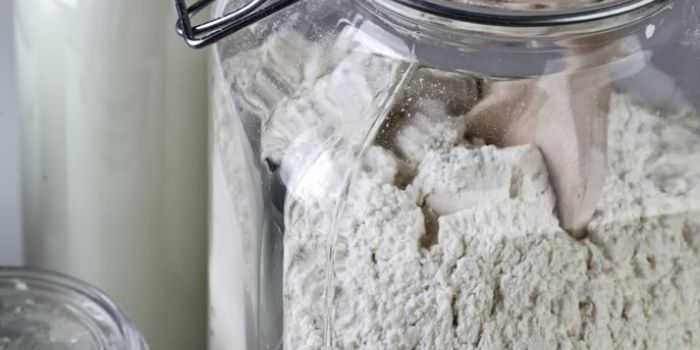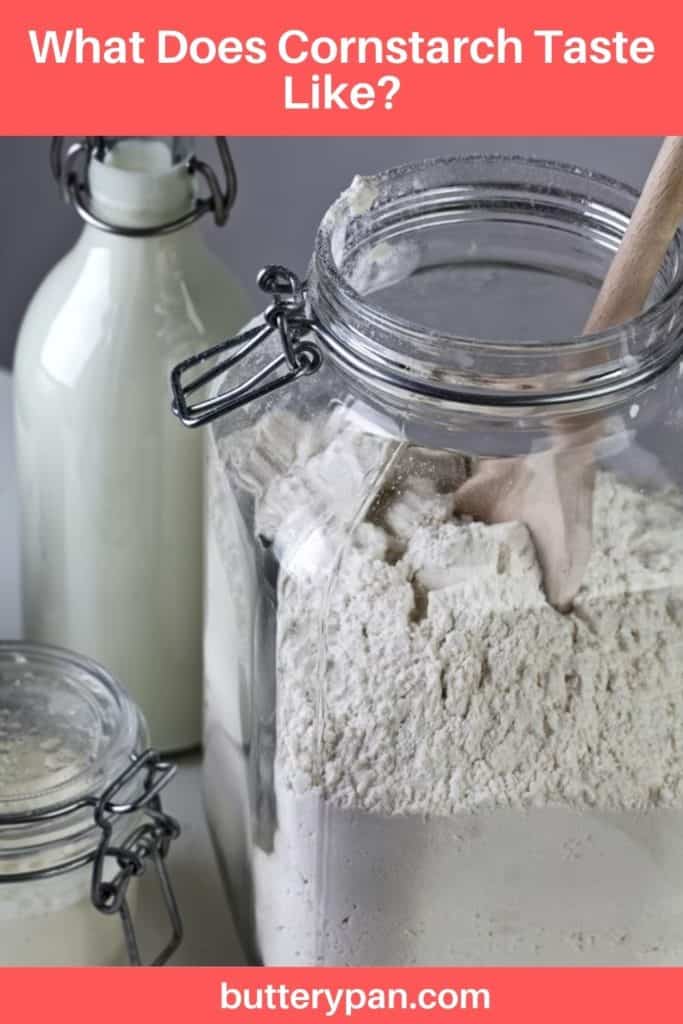What Does Cornstarch Taste Like?

What does cornstarch taste like? Cornstarch is hardly ever eaten on its own, but it does have a taste. Most people who try cornstarch say that it tastes a little sweet but mostly flavorless. The consistency and taste are similar to regular wheat flour. A bland and mild taste on its own that mostly just tastes powdery or dusty.
To enhance the taste of cornstarch, add ingredients with more distinct flavors like:
- Milk;
- Lemon Juice;
- Vanilla;
- Sugar.
Table of Contents
What Does Cornstarch Taste Like?
Cornstarch is usually used as a thickening agent in cooking. It’s not recommended to be eaten raw and on its own. Its taste has been described as:
- Flavorless;
- Powdery;
- Slightly sweet;
What Does Cornstarch Chunks Taste Like?
Cornstarch chunks don’t have much flavor on their own. They aren’t dangerous, and people eat cornstarch chunks because they find it satisfying. Their taste is usually described as:
- Bland;
- Crunchy;
- Smooth once the cornstarch dissolves.
Some people do say that chunks of cornstarch taste good, but usually, they describe enjoying the crunchy texture more than the flavor itself.

What Does Cornstarch Brick Taste Like?
Cornstarch bricks are prepared chunks of cornstarch that you can make yourself and store in an airtight container or purchase in a box and used in cooking. The flavor of cornstarch bricks is usually described as:
- Slightly sweet;
- Powdery;
- Dusty;
- Crunchy;
- Bland.
What Does Argo Cornstarch Taste Like?
Argo is a brand of cornstarch, so its taste is similar to other brands and types of cornstarch. Unlike corn flour, it doesn’t taste like corn. Instead, Argo starch as a flavor that has been described as:
- Powdery;
- Mild;
- Largely flavorless.
What Does Baked Cornstarch Taste Like?
Baked cornstarch is perfectly safe to eat but is usually used as an ingredient in cooking as it doesn’t retain much corn flavor, unlike some cornflour.
If you do decide to try baked cornstarch, you can expect a flavor that is:
- A little sweet;
- Powdery at first (cornstarch dissolves in warm water, and it’s one of the more popular cooking thickening agents, so it will get thicker in consistency when you start eating it);
- Mild.
What Does Cooked Cornstarch Taste Like?
Cooked cornstarch is safe to eat but isn’t usually eaten on its own. The main ways its flavor is described are:
- Like it has a smooth and silky texture;
- Like it tastes like flavorless slime.
Most people add a flavoring of some sort to their cornstarch as it’s usually just used as a thickening agent to thicken sauces, liquids, and doughs.
Some common flavorings to change the typically cooked cornstarch flavor are:
- Lemon juice;
- Powdered sugar;
- Vanilla;
- Sugar.
What Does Straight Cornstarch Taste Like?
If you’ve tried corn flour, whole wheat flour, or even just corn, you might expect cornstarch to taste the same. However, through the process the dried corn kernels went through to become powder, cornstarch loses most of its original corn taste.
While its taste is sometimes compared to the flavor of regular wheat flour, it usually differs by being described as:
- Having a starchy flavor;
- Slightly sweet;
- Slimy or smooth in texture.
While cornstarch is usually safe, much like other types of flour and starch, it shouldn’t be consumed raw.
What Does Bad Cornstarch Taste Like?
If you store cornstarch properly in an airtight container, it doesn’t go bad. As long as the powder isn’t contaminated by anything else and doesn’t mold (this can happen if it’s in contact with cold water or any other cold liquid for extended periods of time), nothing should affect the taste.
Cornstarch should normally have a flavor that is:
- Mild;
- Slightly sweet;
- Mostly flavorless;
- Powdery at first and then smooth once you’ve begun eating it.
If you notice a large difference from any of these flavors and textures, your cornstarch may have been contaminated.
Please note: Cornstarch should be kept dry. However, if stored cornstarch comes in contact with warm water, it will dissolve and not mold.
Does Cornstarch Have Taste?
If you properly preserve cornstarch on its own doesn’t have much flavor. Unlike what you might assume, it doesn’t taste like corn or corn flour at all. Instead, you can expect the taste of cornstarch to be:
- Dusty or powdery if in its fine powder form;
- Crunchy if in starch chunk or starch brick form;
- Slimy once it’s been chewed;
- Flavorless.
Its lack of intense flavor means that there are many cornstarch substitutes you can use, and replacing cornstarch in any recipe shouldn’t cause any major changes to your cooking. For example, cornstarch and potato starch or tapioca starch can be substituted for one another.
What Does Cornstarch Taste Like Raw?
Raw and cooked cornstarch has a similar taste. In both cases, most people describe cornstarch flavor as:
- Bland;
- Slightly sweet;
- Powdery;
- Similar in taste and texture to other types of flour.
What Happens If You Eat Cornstarch?
You can find cornstarch in many foods, from fruit sauces and other liquid-based foods to apple pie fillings. When part of a well-rounded diet, eating cornstarch shouldn’t have any long-term effects on your health.
Like most starch, too much cornstarch, however, can be bad for you. It can cause:
- High blood sugar;
- Nutritional deficiencies if not part of a well-balanced diet;
- Weight gain;
- While tasteless on its own, you find yourself craving cornstarch for the texture it gives to foods you eat.
If you’re worried about this, consider substituting cornstarch for a healthy alternative. Some popular substitutes are:
- Potato starch;
- Potato flour;
- Arrowroot powder (also called arrowroot starch and arrowroot flour);
- Tapioca starch;
- Whole wheat flour;
- Rice flour;
- Your favorite gluten-free flour.
Summary
Now you know what does cornstarch tastes like! Cornstarch is a great thickening agent, but it doesn’t have much taste on its own. Like most types of starch, cornstarch shouldn’t be eaten raw, but whether cooked or not, its taste is described similarly.
Cornstarch powder is usually:
- Tasteless;
- Powdery tasting until chewed;
- Slimy or smooth in texture;
- Mildly sweet.
Cornstarch chunks or bricks are usually:
- Slightly sweet;
- Mostly flavorless;
- Crunchy in texture until chewed.